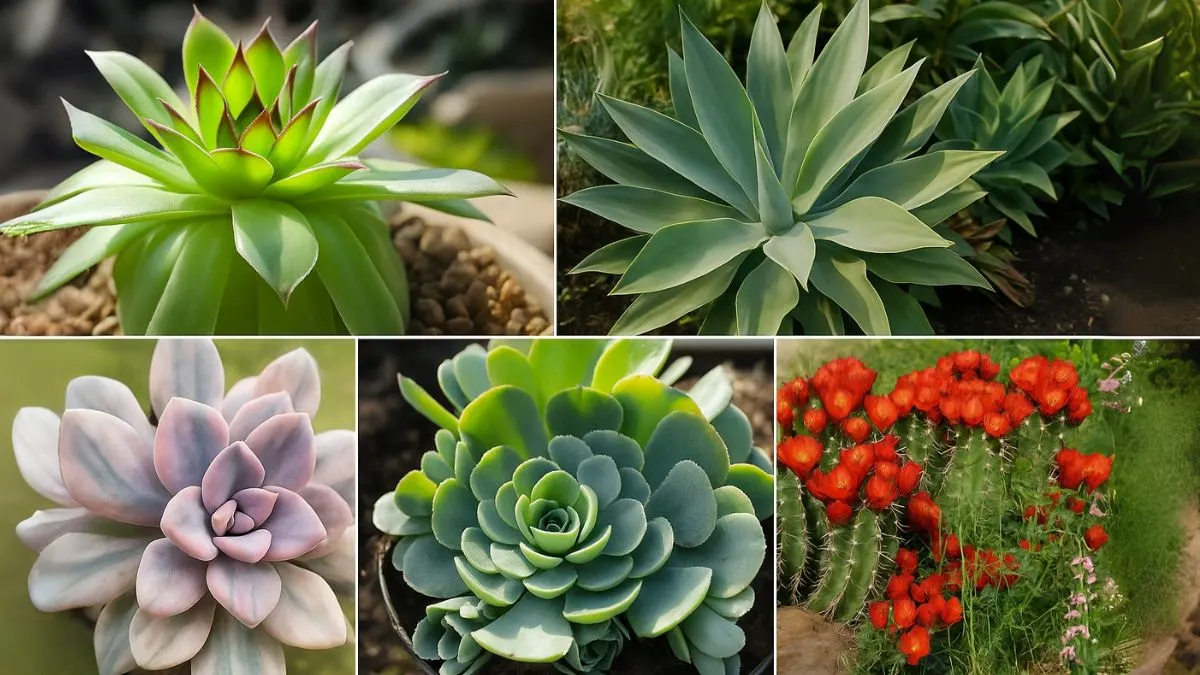When most people think of succulents, they imagine desert landscapes and sun-drenched windowsills. But did you know that many succulents thrive in snowy winters, icy winds, and freezing temperatures? These cold-hardy succulents aren’t just survivors—they’re showstoppers. They add texture, color, and structure to winter gardens while demanding minimal care.
As someone who has experimented with succulents in frosty Canadian winters, I’ve discovered a handful that not only survive but look even more beautiful dusted with snow. Let’s explore five cold-hardy succulents that deserve a spot in your garden.
1. Sempervivum (Hens and Chicks)

Among the most famous cold-weather survivors, Sempervivum (Hens and Chicks) is a must-have. This succulent forms rosettes, with a “hen” producing smaller “chicks” that spread and carpet your garden.
- Hardy down to -30°C (-22°F) in some varieties.
- Thrives in rocky, well-drained soil with full sun.
- Available in striking colors ranging from deep burgundy to green-tipped pink.
Gardeners often grow Sempervivum, Hardy Sedum and Hardy Opuntia together for a resilient winter succulent bed. I’ve seen mine peek through snow, still holding color while other plants around them faded.
2. Agave
Most people associate Agave with warm climates, but certain species are surprisingly cold-hardy. They bring bold, architectural structure to outdoor landscapes.
- Some varieties tolerate temperatures as low as -10°C (14°F).
- Their dramatic, spiky leaves create a desert-like statement even in frosty gardens.
- Plant them in gritty, well-drained soil and protect the crown from standing water in winter.
If you live in the northern USA or Canada, choose hardy species like Agave parryi. It’s both cold-resistant and visually stunning.
Also Read: 5 Gorgeous Bird of Paradise Plants That Bring the Tropics Home
3. Pachyveria pachytoides
A hybrid between Pachyphytum and Echeveria, Pachyveria pachytoides is lesser-known but equally resilient. Its plump, silvery-blue leaves with a powdery coating give it a frosted look—perfect for winter gardens.
- Handles light frosts and cooler nights better than many tender succulents.
- Works beautifully in rock gardens and container arrangements.
- Its leaves blush pink or purple in cold weather, adding seasonal color.
This one surprised me during my first trial—it looked fragile but ended up thriving even after an early snowfall.
4. Rosularia
If you’re hunting for a unique option, Rosularia deserves attention. Belonging to the same family as Sempervivum, it forms compact rosettes and thrives in alpine conditions.
- Grows in crevices, rock gardens, and walls.
- Cold-tolerant and drought-resistant, a true dual survivor.
- Produces dainty star-shaped flowers in summer, extending its charm beyond winter.
Its subtle beauty makes it perfect for gardeners who want a mix of ruggedness and elegance.
5. The Claret Cup Cactus
One of the most striking desert-to-winter survivors is The Claret Cup Cactus. Known for its cylindrical stems and brilliant red blooms, it thrives in harsh climates.
- Native to North America, especially mountainous regions.
- Withstands cold temperatures while rewarding you with vivid flowers in spring.
- Needs sandy, well-drained soil and minimal watering during dormancy.
I first saw this cactus thriving in a high-altitude garden in Colorado—it was snow-covered in winter but bloomed magnificently in spring.
Also Read: How to Care for Indoor Prayer Plants
Why Choose Cold-Hardy Succulents?
Growing cold-hardy succulents isn’t just about survival. It’s about year-round beauty with minimal fuss.
- They require little water, even in winter.
- Most thrive in poor, rocky soils.
- They offer stunning foliage and seasonal flowers.
Below is a quick comparison for easy reference:
Succulent |
Cold Tolerance |
Unique Feature |
Sempervivum |
-30°C (-22°F) |
Spreads with “hens and chicks” rosettes |
Agave (hardy types) |
-10°C (14°F) |
Bold, architectural foliage |
Pachyveria pachytoides |
Light frost-tolerant |
Silvery leaves blush in cold |
Rosularia |
Alpine hardy |
Tiny rosettes with summer flowers |
Claret Cup Cactus |
Freezing nights |
Brilliant spring blooms |
If you’ve hesitated to try succulents outdoors in cold climates, these five are the perfect place to start. They’ll reward you with resilience, beauty, and seasonal surprises.
🌱 Your turn: Which of these cold-hardy succulents would you plant first in your winter garden—classic Sempervivum or the unique Claret Cup Cactus?






